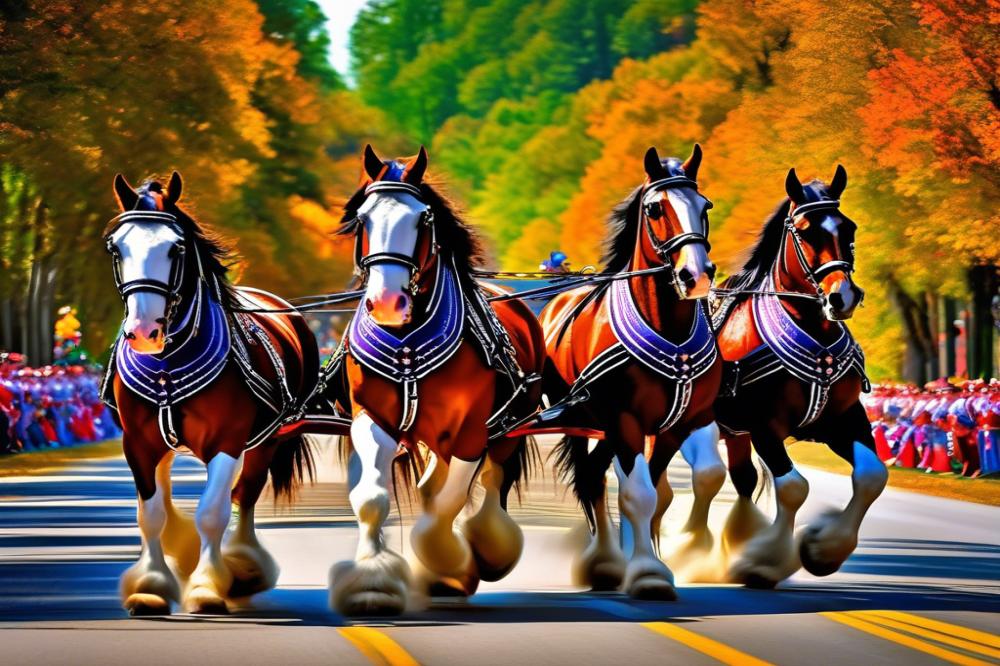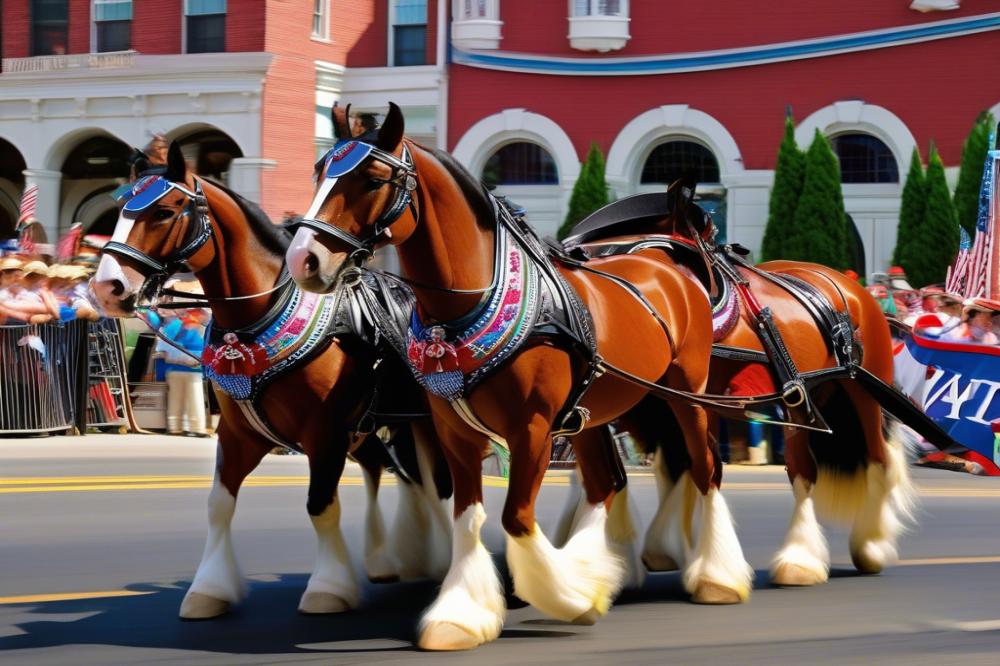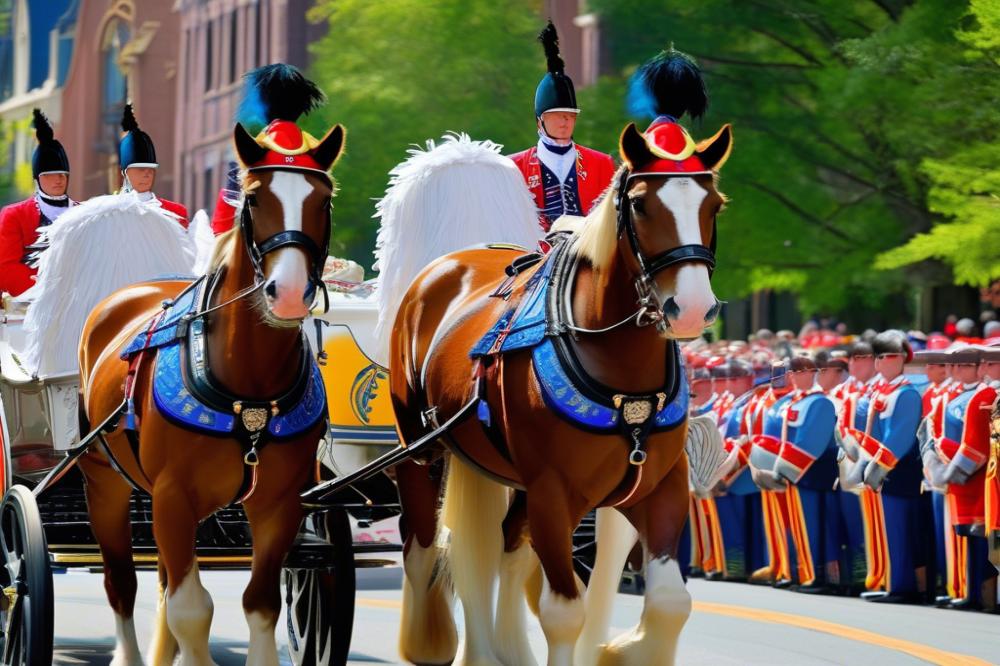Understanding the Majesty of Clydesdales in Parades
Clydesdales are more than just horses; they symbolize strength and grace. Their presence at events captures the attention of onlookers and adds an impressive visual to any occasion. Parades often feature these magnificent animals, showcasing their beauty and gentle demeanor. Enthusiasts and spectators alike appreciate the unique bond these horses form with their riders.
Riding them in parades involves more than simply mounting the saddle. Proper techniques and awareness are crucial for both horse and rider. parade riding requires skill and confidence. Riders must communicate effectively with their mounts while navigating through crowds and maintaining a lively atmosphere. Understanding the nuances of this art can significantly enhance the experience for everyone involved.
The aim of this article is to unpack the best practices for riding Clydesdales in parades. A focus will be placed on safety, communication, and the overall enjoyment of the event. Riders can benefit from insights on preparation and training to foster success. With the right information, anyone can join the ranks of skilled parade riders.
Understanding Clydesdales

These magnificent horses have a rich history that dates back to the 1700s in Scotland. Initially bred for heavy farm work, they are known for their strength and size. Standing about 16 to 18 hands tall, they typically weigh between 1,600 and 2,200 pounds. These animals often possess a striking appearance, characterized by their long legs and large feathering on their lower limbs. Their gentle demeanor, combined with impressive build, makes them popular in many settings, including parades.
When it comes to temperament, Clydesdales offer a mix of strength and calmness. Most are considered docile and friendly, which is essential for events that draw large crowds. Patience is one of their standout traits; they handle noise and excitement better than many other breeds. However, they can also exhibit moments of curiosity, which can sometimes lead to unexpected behavior. Understanding these characteristics is crucial for anyone riding during public events.
Comprehending horse behavior is vital for effective riding. Horses communicate through body language and reactions. Recognizing signs of discomfort or excitement allows riders to act promptly. Keeping a calm demeanor helps the horse remain relaxed, especially in bustling environments. Riders should be aware of the surroundings, as even the most composed horse can be startled by sudden movements or loud sounds. Familiarizing oneself with the horse’s signals ensures a safer and more enjoyable experience for both rider and animal.
Preparation for Riding Clydesdales

Rider preparation begins well before the parade starts. Mental readiness is crucial for any event involving large animals. Understanding the environment, including loud noises and bustling crowds, helps in adjusting behavior. Remaining calm is essential. Riders should practice staying focused amid distractions. This mindset benefits both the horse and the rider during the actual parade.
Physical fitness is equally important. Those who plan to ride must possess a good level of stamina. Riding can be demanding. Regular exercise can prepare the body for long hours in the saddle. Strengthening core muscles will help in maintaining balance while riding. A sturdy grip on the reins is vital, especially when navigating through a crowd.
Grooming practices play a significant role in ensuring comfort for the horse. A clean coat looks great and promotes better health. Brushing the horse removes debris and dirt, making for a happier horse. Checking hooves is also critical. Ensuring there are no stones or signs of discomfort can prevent mishaps during the parade.
Choosing the right equipment is critical for both safety and performance. A well-fitted saddle is a priority. It should not only be comfortable for the rider but also for the horse. Bridle selection matters as well; the correct fit can make all the difference. Accessories enhance the overall look and may help in calming the horse. Riders must be familiar with their gear before the event.
Safety Tips for Parading

Prioritizing safety is vital for both rider and horse. A parade environment can be chaotic, full of loud noises and excited spectators. Understanding the risks helps minimize potential dangers. Riders should always wear proper gear, including helmets, to protect themselves in case of an accident. It’s equally essential to check the tack and harness for any wear or damage before the event.
Managing the crowd is crucial while riding. Horses can be sensitive to unfamiliar sounds and sudden movements. Keeping a safe distance from spectators reduces the chances of spooking the animal. Being aware of surroundings allows riders to anticipate any sudden changes in the atmosphere. Gentle reminders to onlookers to stay calm can also create a more comfortable environment.
Unforeseen situations can arise during a parade. Riders must have clear emergency protocols in place. Knowing when to dismount and how to control the horse is essential. In case of a horse acting up or getting frightened, staying calm helps prevent escalation. A well-thought-out plan can make a significant difference in how effectively a rider responds.
Health considerations should not be overlooked. Monitoring the horse’s condition is related to overall well-being and performance. Watch for signs of stress, fatigue, or discomfort. Frequent breaks can help the horse stay hydrated and energized throughout the event. Collaboration with a veterinarian prior to any parade can offer valuable insights into the horse’s readiness.
Training Techniques for Parade Readiness
Preparing a horse for a parade involves several essential training practices. It is crucial to start early. Begin by introducing the horse to different sights and sounds that will be encountered during events. This will help in acclimating the horse to the environment it will face.
One important part of the training is desensitizing the horse to loud noises. Use speakers that play crowd sounds, including cheering and music. Gradually increasing the volume can teach the horse how to stay calm amid excitement. It might take some time, but patience is key during this process.
Building trust between the rider and the horse is significant. Groundwork serves as an excellent way to strengthen this bond. Spend time leading the horse, grooming it, and allowing it to become comfortable around you. Horses respond well to consistent handling and reassurance.
Regular practice sessions should not be overlooked. Repetition helps horses learn what to expect. These training sessions can simulate the parade experience. Practicing in a safe environment will prepare the horse for the actual event. Use props like flags or balloons to create a sense of realism.
Incorporating different riders can also be beneficial. Allow the horse to adapt to various riding styles and cues. This exposure will reduce anxiety when other people are involved in the parade.
Finally, remember to keep sessions enjoyable. Mixing training with positive reinforcement can create a better learning atmosphere. Celebrate small victories, and always provide comfort. Your Clydesdale will appreciate the encouragement, making parade day a more positive experience.
Parade Etiquette for Riders
Understanding Parade Protocols and Guidelines
Following the rules of the parade is crucial for a successful event. Each parade can have specific requirements. Check with the organizers ahead of time. Knowing where to line up and how to move is essential. Safety protocols are often prioritized. Riders must remain aware of their surroundings at all times.
Appropriate Behavior While Participating in Parades
Displaying a calm demeanor helps set a positive tone. Avoid loud noises, as they can startle both horses and spectators. Respect is vital; this means treating fellow participants and animals with kindness. Engaging with other riders can build camaraderie, but keep distractions minimal. Use good judgment; actions reflect not just on you but also on the team.
Engaging with the Audience: Fostering Positive Interactions
Connecting with parade watchers can create memorable experiences. A simple wave or a friendly smile can enhance their day. This engagement helps promote a warm atmosphere. Remember that children often admire horses the most, so take time to acknowledge them. However, be polite and mindful of boundaries; not everyone may want to approach.
Managing Distractions and Maintaining Focus on the Horse
Distractions can occur frequently during parades. Keep an eye out for sudden movements, loud noises, or unexpected obstacles. Remaining attentive to the horse is necessary for both safety and performance. If a distraction arises, calmly redirect the horse’s attention. Maintaining focus builds confidence in both rider and animal. It’s important to practice mindfulness while sharing the parade experience.
Clydesdale Facts and Trivia
Clydesdales have a rich history that dates back to the 18th century in Scotland. Originally bred for heavy farm and draft work, these horses were prized for their strength and stamina. Typically, they stand between 16 and 18 hands tall, making them one of the larger horse breeds. Their build includes powerful legs and broad hooves, designed to carry heavy loads over long distances.
Another fascinating aspect is their distinct coat colors. Most exhibit a bay color with white markings along their faces and legs. This striking appearance not only makes them visually appealing but also enhances their presence during parades. The long, flowing feathers on their lower legs create an elegant, eye-catching effect as they stride confidently down the route.
Clydesdales possess a calm and gentle demeanor. This temperament is essential in crowded parade settings where loud noises and large crowds can be overwhelming. Riders benefit greatly from their manageable personality, ensuring safety and enjoyment for both horse and rider. This breed is also known for its intelligence, which aids in training and discipline.
The versatility of these horses plays a key role in cultural events. They appear regularly in festivals, parades, and promotional activities, most famously associated with the Budweiser brand. Their participation in events often symbolizes tradition and heritage, captivating audiences with their beauty and grace.
During parades, these animals often pull ornate wagons. This adds to the visual spectacle, showcasing both the horse’s strength and historical significance. Spectators admire not only the horses but also the craftsmanship of the equipment they carry. Clydesdales bring a sense of nostalgia, reminding many of the days when horse-drawn vehicles were commonplace.
Final Thoughts on Riding Clydesdales in Parades
Riding Clydesdales in parades can be a remarkable experience when done right. Following the best practices outlined throughout this article will prepare you for success. Start by understanding the basics of horse behavior. Recognizing how horses react to different sights and sounds will help you gain their trust and confidence.
Your responsibility as a rider is vital. Always prioritize the safety of both yourself and the horse. Utilizing the safety tips discussed will significantly reduce the chances of unexpected incidents. Ensuring proper training for both you and your horse cannot be overstated. This preparation can make a big difference on parade day.
Experiencing the joy of riding these magnificent animals is truly special. Each parade offers an opportunity to showcase their beauty while also connecting with the crowd. Applying the techniques you’ve learned will help you navigate these events with ease. Remember, every encounter with a Clydesdale, whether in a parade or not, is a chance for growth.
Embrace the challenges and rewards that come with riding. With the right mindset and preparation, you can enjoy a safe and pleasurable parade experience. Ride boldly but always with respect for the horse beneath you.



